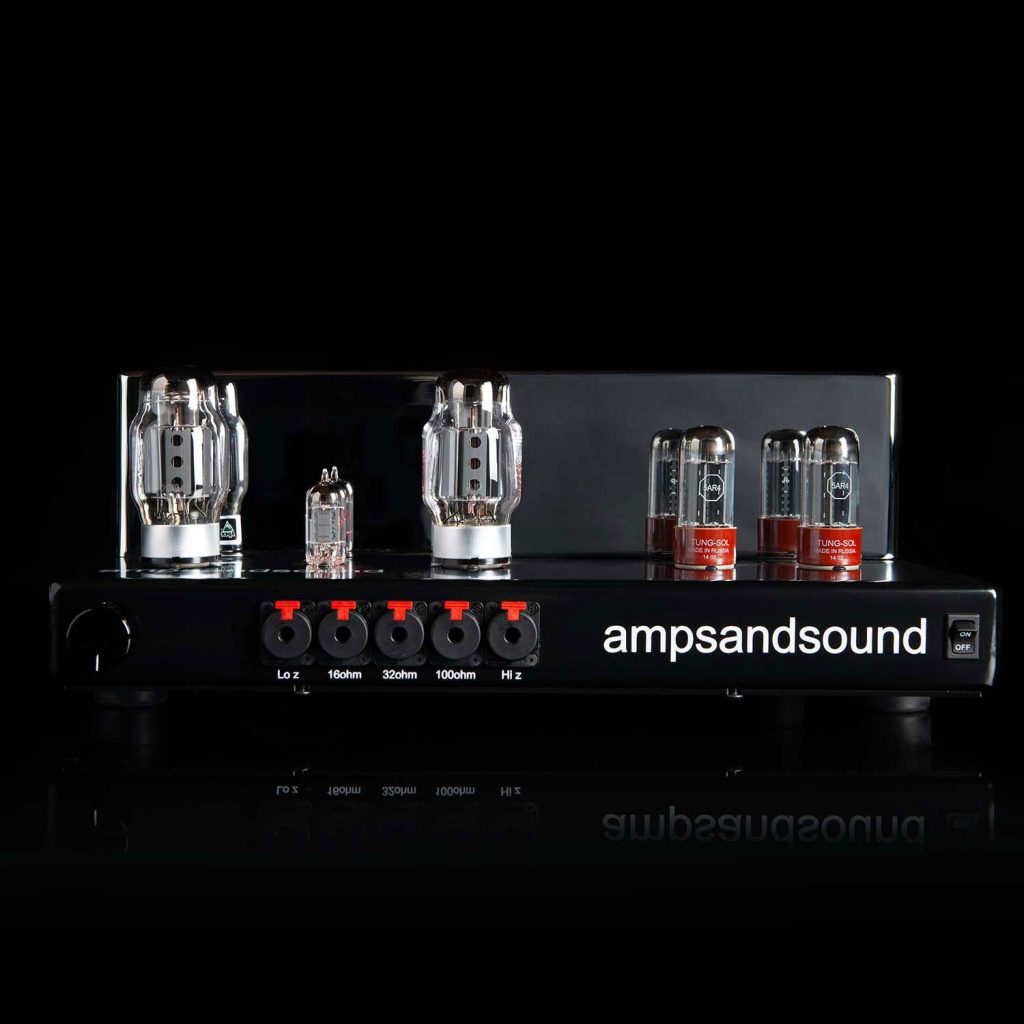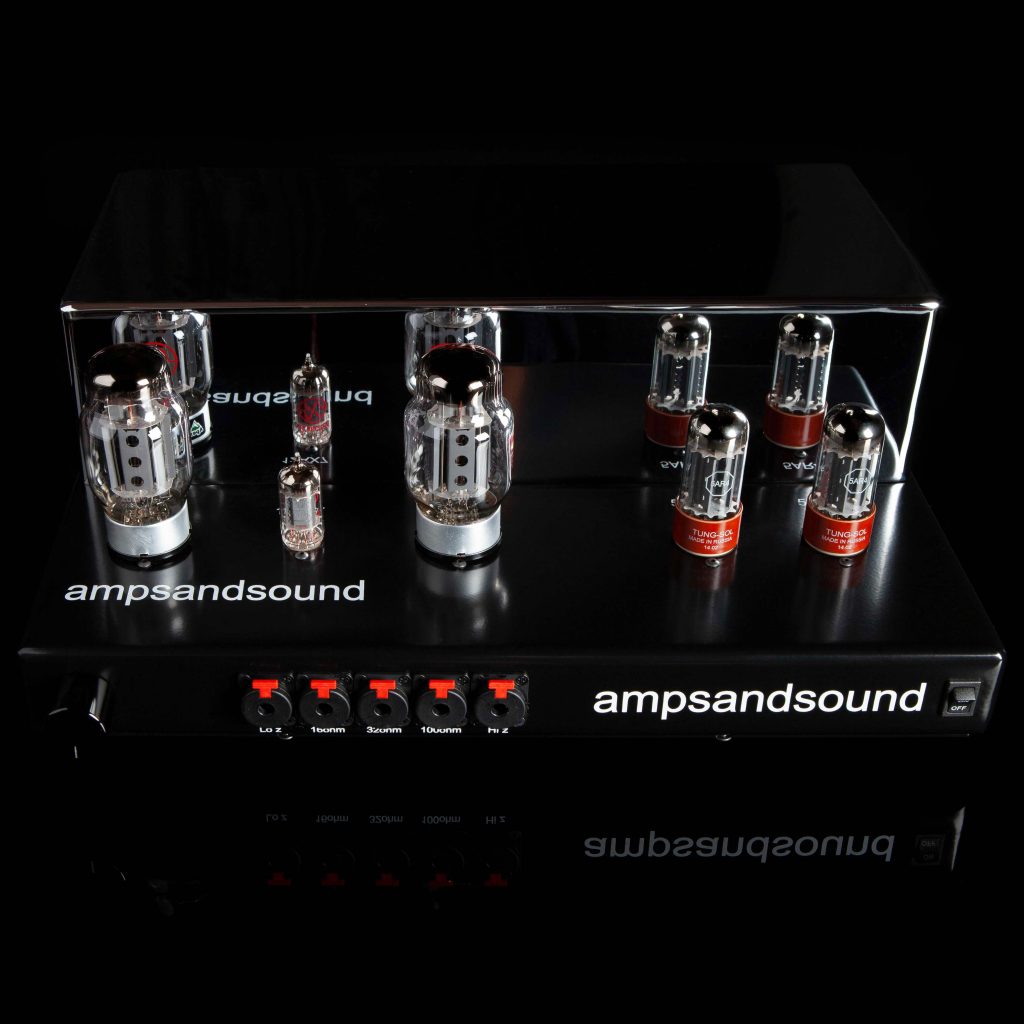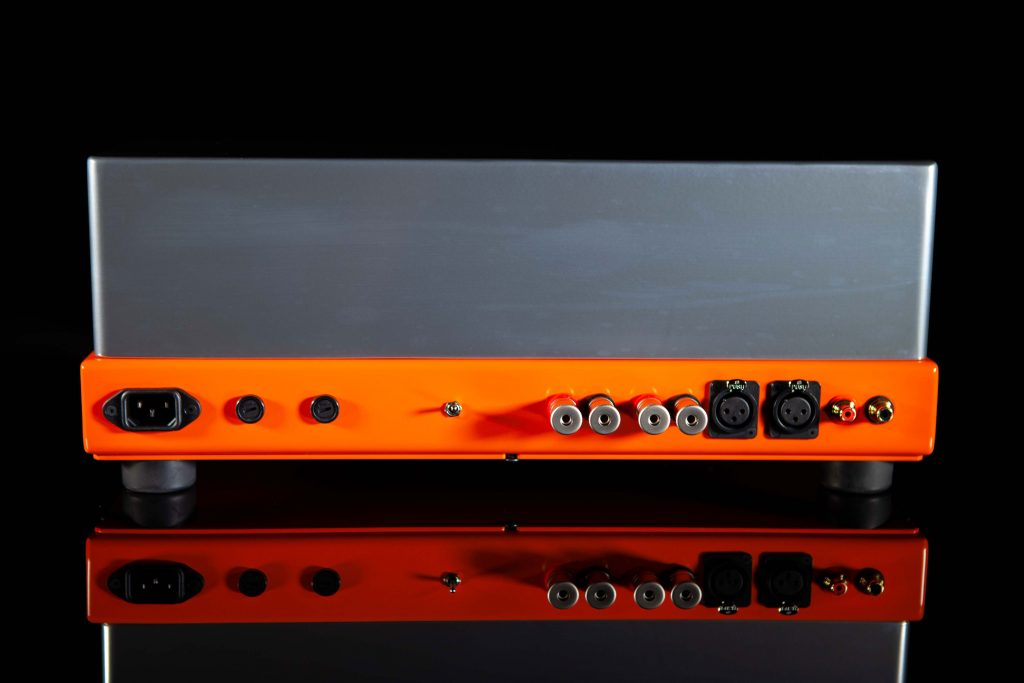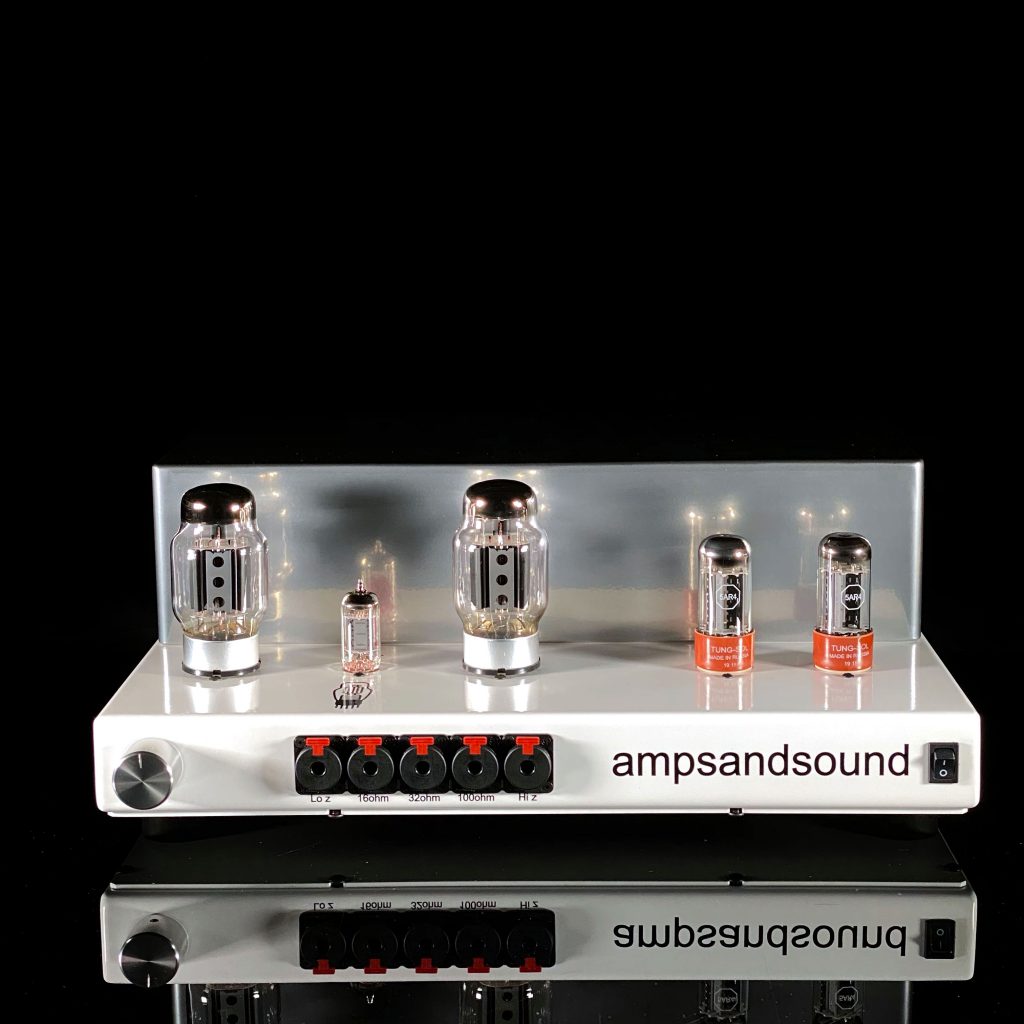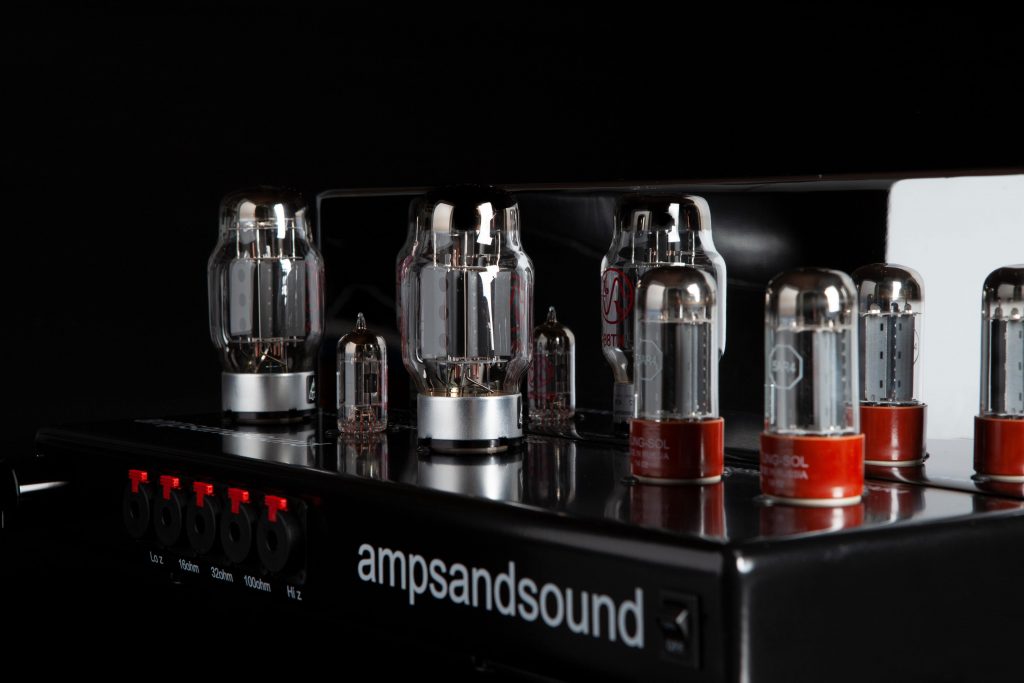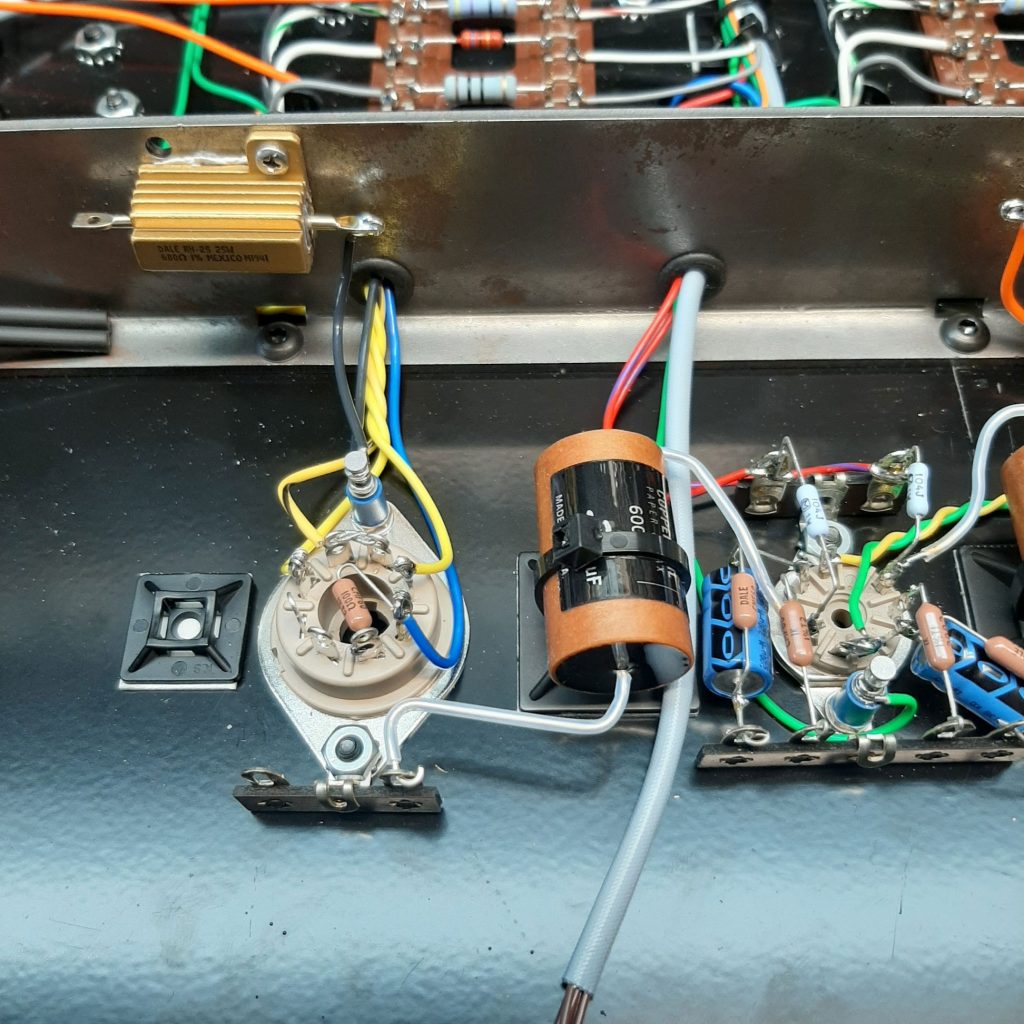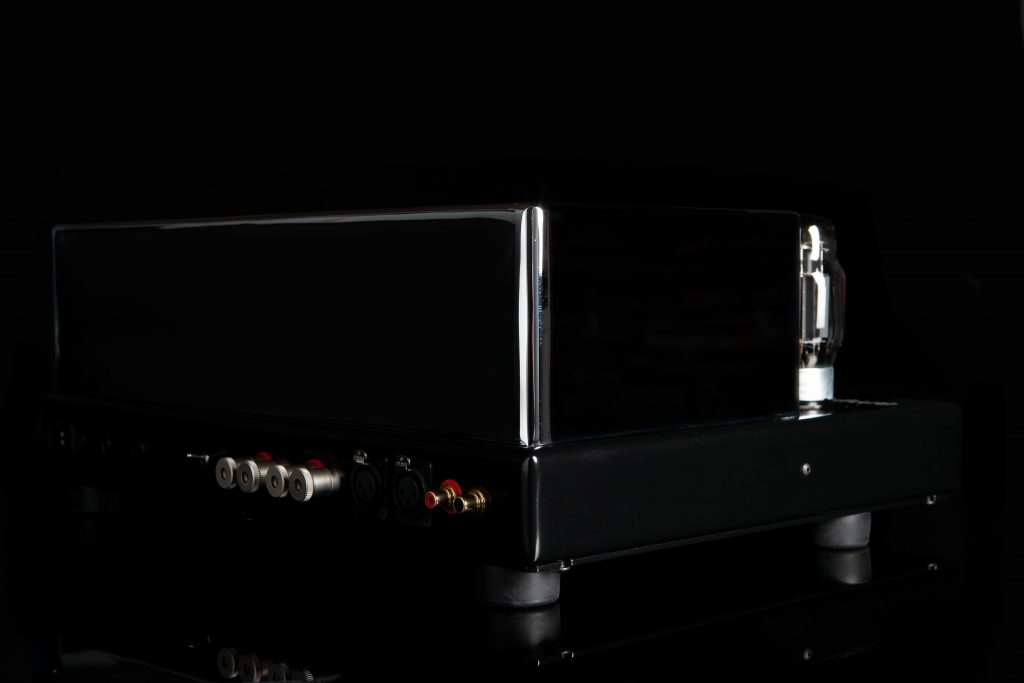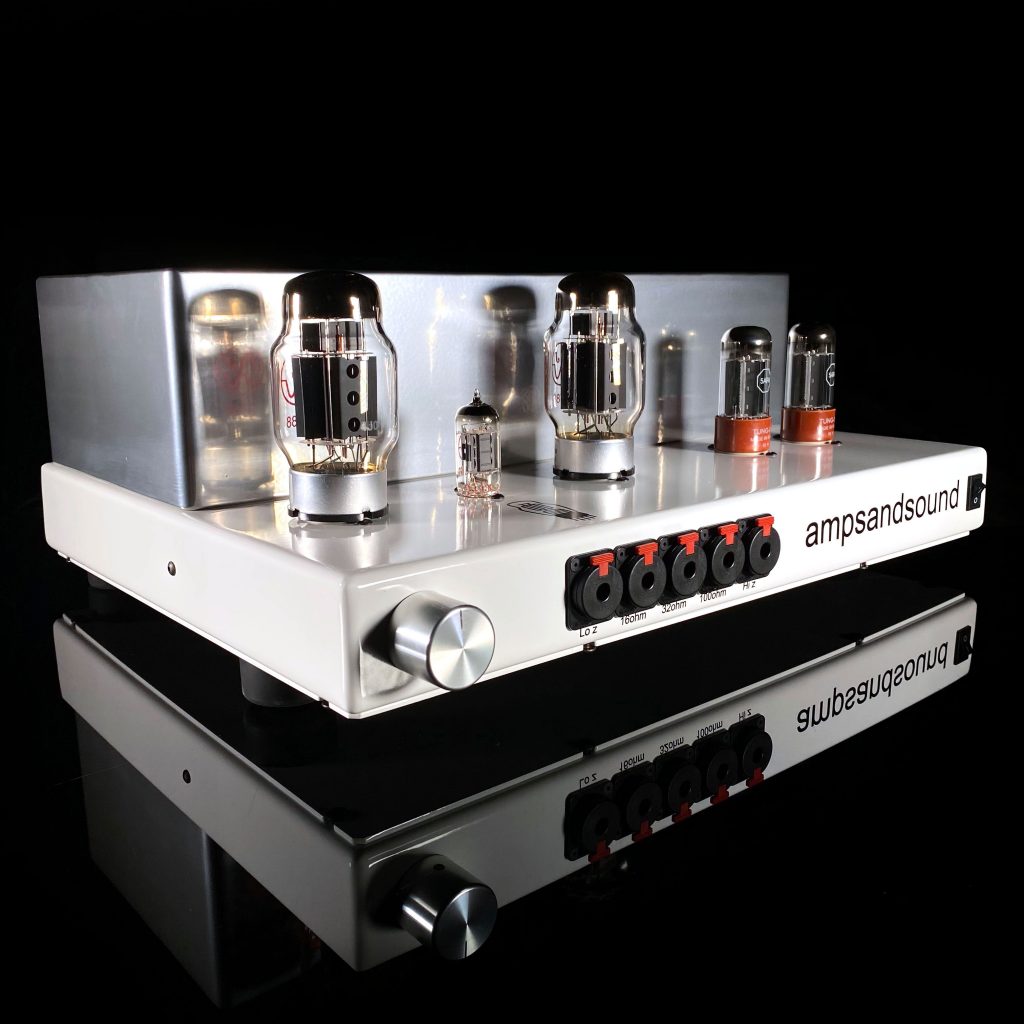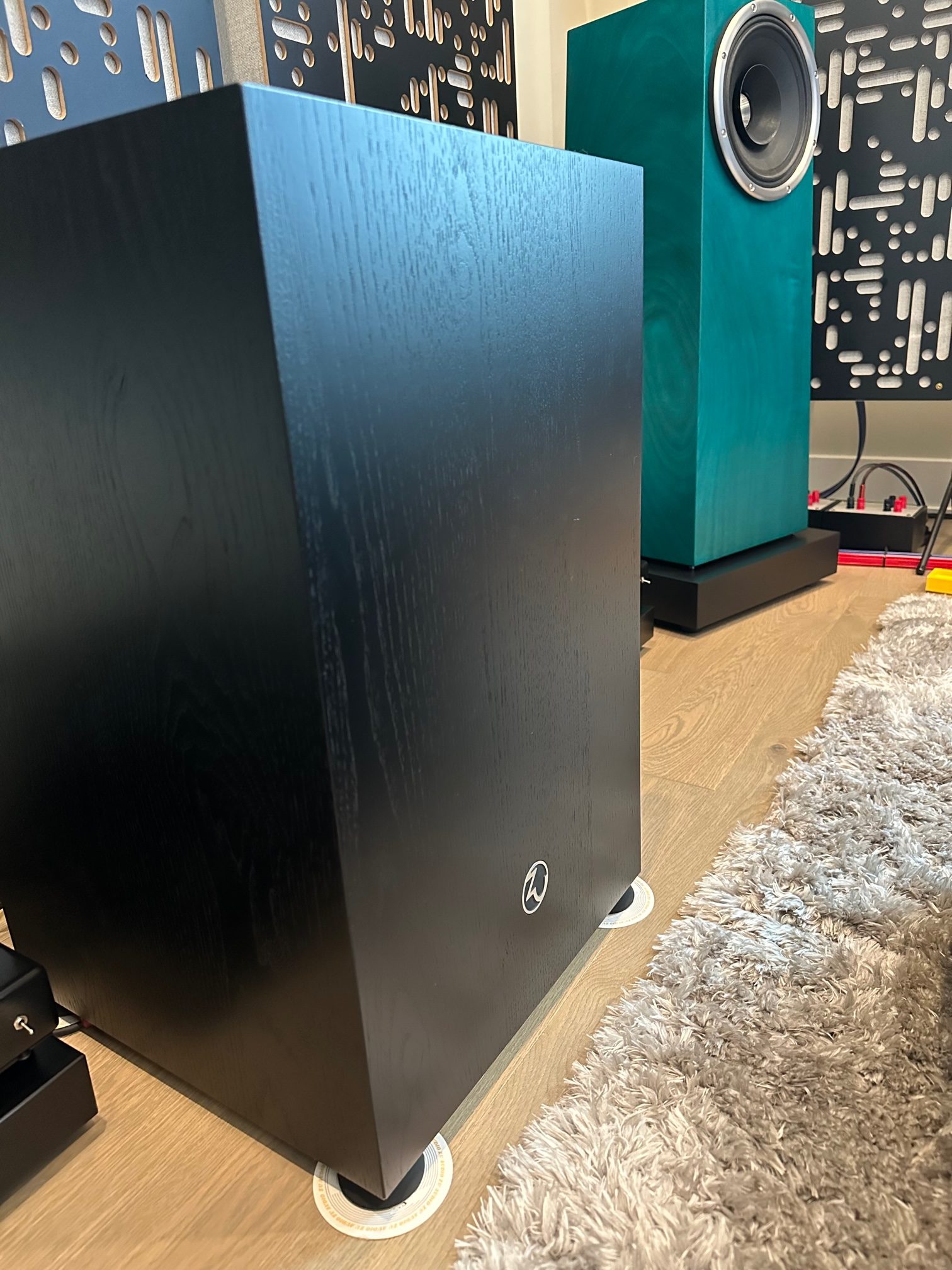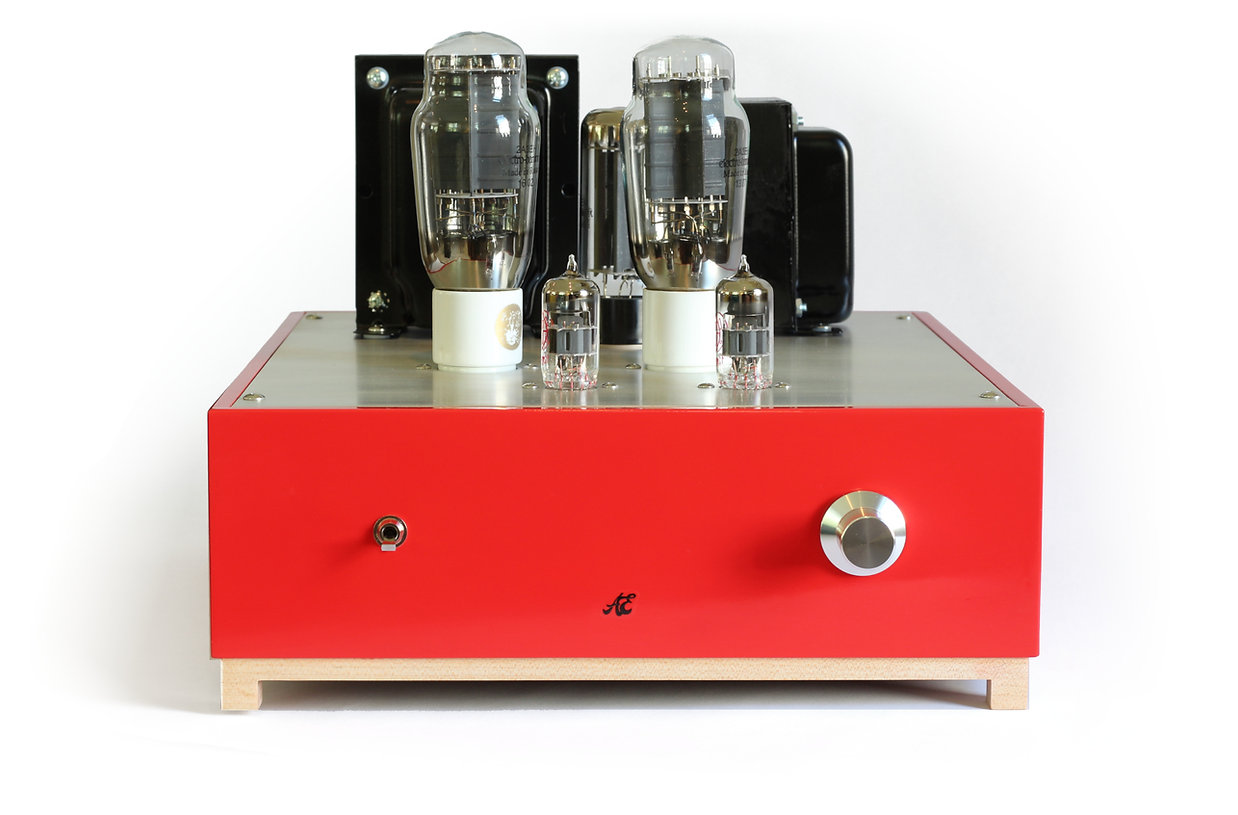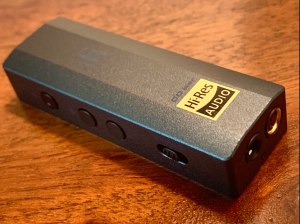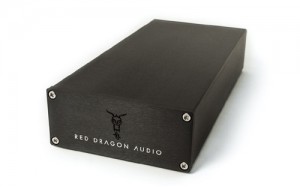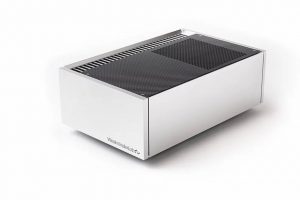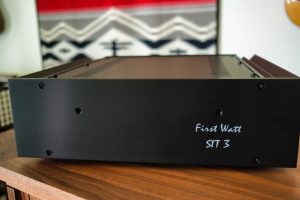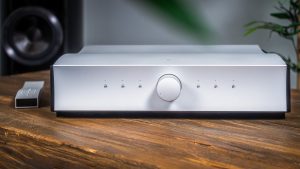The ampsandsound Nautilus, 60+ pounds of single ended glory
As both a reviewer and a consumer, I read a lot of reviews myself. I often see solid state amplifiers being commended for having tube amp like qualities in their mid-range presentation, or tube amplifiers being commended for having solid state bass or speed. I myself have used these same euphemisms to describe some of my all-time favorite amps and thought they made a ton of sense.
However, as I have worked on this review of the ampsandsound Nautilus over the past three months I have chosen to re-evaluate whether I should be using these euphemisms in my vocabulary, both as a reviewer and a consumer. The reason for this re-evaluation is that the Nautilus has presented me with an amplifier that has no compromises that would easily allow a listener to identify its underlying topology. I would describe it as not bright and edgy, nor warm and flabby, instead vocals are rendered with realism that is simply shocking, and the sound is extended from the deepest depths all the way to the highest peaks without a hint of fatigue. It is simply a reference class amplifier quiet enough to be used with headphones, and powerful enough to be used with mid to high efficiency speakers. It defies categorization, and even at its $8500 price tag it provides value for the money in spades, based on both its performance and its build quality.
Taking a Step Back
The Nautilus is a single ended tube amp designed to use a 12AX7, KT88s, and 5AR4s
I have been an ampsandsound fan ever since 2018 when I bought my first amp from them, the Mogwai SE. I was amazed at how good it was (and how inexpensive it was compared to others in its performance class). I loved the styling, and found myself spending hours upon hours listening to it. However, the thing that really converted me from a happy owner to a fan was ampsandsound's owner, Justin Weber. Justin is an incredibly nice guy who is simply passionate about audio and will always tell you how it is. He never hits you with the hard sale, just his opinion and the facts. It did not take long for us to become friends, and that friendship has given me a deep understanding of his development process for his products, as well as allow me to influence certain products in his lineup.
As a reviewer at Positive Feedback, I have reviewed two other ampsandsound products, the Suolo Monos and the Bigger Ben. I left both of those reviews impressed, each product raised the performance bar, and showed me more of what Justin was capable of. The important thing to know about these products is they were purchased, with no promise of a review, at their retail price. The same is true of the Nautilus, and what compelled me to sit down and write this is the same thing that compelled me with the other amplifiers, sheer amazement. I need to share with the world how breathtaking these products are. For Justin, building these amplifiers is a labor of love, it is his third job, and his passion project. While it shows with every single product he makes, the Nautilus feels like the ultimate expression of his passion.
What is the Nautilus?
When I asked Justin what the Nautilus was, he described it as his take on a high end tube integrated that was designed for the headphone connoisseur who also has speakers. I know some of you are thinking there must be compromises with a headphone amp that also works with speakers, and has onboard volume control. I will assure you there are not.
The Nautilus weighs nearly 100 pounds shipped, which puts the actual amplifier's weight at around 70 pounds. It is a single ended, dual mono, tube amplifier designed to be used with a 12AX7 input tube, KT88 output tubes, and two 5AR4 rectifiers (one for each channel, with completely independent power supplies). The tubes are cathode biased, and while the amp is designed for KT88s, it is possible to use 6550s, KT77s, EL34s, and 6L6GCs which allows for a ton of exploration and sound customization. The amplifier is built around a solid rolled steel chassis, and a steel transformer cover hides two 20 watt output transformers, two power transformers, and two sizable chokes. The amp is built by hand, and uses a tried and true process found mainly in amps from the 60s and 70s: there are no integrated circuits, no voltage regulators, just point to point wiring, turret boards, and good purest design. Every part of this amplifier is over spec'd, generally by 200% or more. There are no frills, no integrated circuits, and because of that this amp can, and will, last a lifetime.
On the front of the amp is a volume knob, which is a stepped attenuator with 24 steps, 5 headphone outputs, and a power switch. On the back of the amp you will find two inputs, a set of RCA inputs, and a set of XLR inputs. These inputs are not selectable, and only one should be used at a time. The XLR input uses input transformers, the same ones used on professional mixing boards, to convert balanced signals to single ended. Because this conversion is done using a transformer, you actually retain the noise cancelling benefits of balanced interconnects. Justin is a big fan of input transformers, and having the option to use them or not is a nice benefit to their inclusion on the XLR input. On the back you also have your IEC power socket and speaker binding posts. The speaker binding posts are made to work with speakers that have an 8 ohm impedance. There is also a switch that allows you to select between speaker outputs and headphone outputs as well.
The back of the Nautilus constrains balances and single ended inputs, speaker / headphone selection switch, two fuses, and the IEC power socket
Coming back to the headphone outputs on the front of the Nautilus, there are 5 outputs with different impedances: 8 ohm, 16 ohm, 32 ohm, 100 ohm, and 300 ohm. One of the things that makes his amps special is that Justin does not believe in using things like voltage divider networks and resistor ladders to get these different impedances. Instead, each output is connected to its own tap on the output transformers, simplifying the signal path and helping ensure that the listener has no compromises, no matter how they use the amp. The headphone taps were chosen logically based on the different types of headphones on the market. The first two are meant to be used with planar magnetic headphones, the third is meant to be used with Grados and other low impedance dynamic driver based headphones, and the final two are meant to be used with ZMF, Sennheiser, and other high impedance headphones.
The 5 headphones taps on the front of the amp use locking single ended connectors, ensuring a secure connection
Power output has been conservatively measured at 8 watts, full bandwidth at 8 ohms and 300 ohms, dipping to around 5 watts on the 100 ohm output. Most manufacturers measure their amplifiers output using a 1kHz sine wave. While this is not incorrect, Justin's method of measuring is more realistic and more accurately reflects real world use, and to be frank, it produces a number that is artificially low when compared with the measurements done using a 1kHz sine wave. In summary, this will be the most powerful sounding and dynamic 8-watt amplifier you have likely heard. I have compared the Nautilus driving speakers with a 60-watt solid-state amplifier and left thinking "Man! The Nautilus sounded so much larger and dynamic."
Unboxing
My Nautilus was the first one produced, and part of Justin's initial production run of three. It arrived in a Seahorse hard case, just like his Bigger Ben and the Kenzie Ovation did. After my wife and I got it into our second story walk-up, I opened the case and saw the Nautilus in person for the first time. The steel chassis was a sight to behold. My personal unit is black and chrome, simply looks incredible, and is a step-up in build quality from his other amplifiers. After trying and failing to lift the amp out of the case, I called my wife back for the remainder of the unpacking process. Make sure you have someone to help you unbox if you buy one of these.
Once the Nautilus was safely placed on the rack, I proceeded to hook it up into my system using single ended Wywires Platinum interconnects, and a Core Power Diamond power cord. The included tubes were two JJ KT88s, one JJ 12AX7s, and two Tung-sol 5AR4s. The included tubes are actually quite good, and I suggest all new tube amp owners use these tubes for the first 3-6 months to get a sense for the inherent sound quality of the amp. In my case, I put in my standard complement of tubes for this type of amp, which are a pair of new old stock GEC KT88s, one new old stock Mullard 12AX7, and two new old stock GEC U52 rectifiers. This tube combo retails for around $1500 to $2500, and in my opinion is reasonable for a $8500 amp. I want to be very clear though, expensive tubes are not required to enjoy this amp, it purely enhances the enjoyment of the amp and can lead to better system matching.
Upon initial power up, the amp kicked as it pulled power to fill the power supply capacitors, and the tubes began to glow as the heaters heated them up. The initial impression the first time I hit play was extremely positive. In comparison to the Bigger Ben, the sound stage was bigger, the bass was deeper, and there was more detail. This was very surprising to me, as the Bigger Ben is a spectacular amplifier, and I would not have called it lacking in any of these areas (and I still would not), however, the Nautilus simply brought an extra layer of resolution to the table.
Review Setup
- Custom Built Roon Core Server
- AURALiC Aries G1 Steamer
- Chord M Scaler and Chord Dave
- ampsandsound Nautilus
- PS Audio Power Plant P12 and Core Power Deep Core
- Headphones: Hifiman Susvara, Hifiman HE1000SE, ZMF Verite Closed
- Speakers: Custom Built Horn Loaded Monitors (35hz - 20hz), 92db/watt
- Cabling: Wave Fidelity Storm Reference BNC Cables, FTA Callisto USB cable, Wywires Platinum Interconnects, Wywires Platinum Headphone cables, Core Power Diamond Power cord, Wywires Platinum Juice II power cords
- Tube Compliment: The tube compliment varied throughout the review period, however the majority of the time was spent with 12AX7s, 5751s or 12AT7s as input tubes, and the output tubes were almost always KT88/6550 variants. All impressions in the following section were made after 200 hours.
Listening to the Nautilus
When I plugged the Hifiman Susvara into the Nautilus I put on "Joyride" by Roxette, and closed my eyes. The space around me disappeared and I found myself in a carnival, all of the little atmospheric details sounded just right, and the space was deep, wide, and tall. Suddenly, the guitar rang out, and I was transitioned into the sixth row of a rock concert. The energy and the excitement of being in the space resulting in head bobbing and toe tapping. As the song continued, I muttered a few words, none of them appropriate for publication. Don't get me wrong, the signal chain of my system is top of the line, and pretty much as reference level as you can get, and my cabling is top of the line, but it simply never sounded this good.
Justin's amps are all masters of conveying energy and emotion to their listeners, it is one of things that keeps them as a mainstay in my system. However the Nautilus really took things to a new level. The fine low level details rendered by the Chord Dave and M Scaler were delivered in spades through the Nautilus, with the amp adding just the right amount of weight to the Dave's drier characteristics and preserving everything else. The result was simply the best headphone listening experience I have ever had. The 3D space was massive and out of head, and as long as the recording was somewhat decent, the space always appeared before my eyes. Voices were rendered with such realism I found myself mouthing the words, and my brain trying to puzzle out that I, or someone else, was not making the sounds it was hearing.
The Nautilus is just as beautiful inside as it is outside. It is constructed with point to point wiring and turret boards
The type of experience I am trying to describe above is challenging to explain, it is something I found that people need to experience themselves to fully understand. I am sadly the lone audiophile in my local friend group, however the Nautilus is the amp that made my friends understand why so much of my entertainment budget goes into this hobby. Every person who put on the Susvaras with the Nautilus driving them was simply floored. Reactions ranged from swearing every few seconds, to dancing, to simply smiling. One of my best friend's wife took off the headphones and said "I get it." She then turned to her husband and said "I want one of these."
One of the biggest compliments I can give the Nautilus is that I have spent 12 hours in a row listening to it, with no fatigue. I had no intention to spend anywhere near that much time listening to music. In one particular session, I meant to listen to two songs, 12 hours later I realized that it was 2am and the entire day had passed me by. My system has always sucked me in, but it has never done so like this.
The Susvara, traditionally one of the hardest headphones to drive, was child's play for the Nautilus providing a rich, dynamic, and fun experience off of the 8 ohm tap. However the Nautilus is not just an amp for power hungry headphones, it can render the same incredible experience on headphones like the ZMF Verite Closed, at 99dB/mW efficient. While it does not take much to make these headphones sing, with the wrong amp you may get background noise. The Nautilus drives the Verite Closed fantastically off of the 300 ohm tap. With the right tube combination, the background was inky black, and I never found myself wondering if the Verite Closed were capable of more. The same story was true for the HE1000SE (96db/mW) off of the 32 ohm tap. It seemed that no matter which headphones I threw at the Nautilus, it simply played them with authority and ease. It is important for the reader to remember that this is a single ended tube amp, which means that the noise floor the amp will be determined by the quality of the tubes used in the amp. Please do not read quality as cost, but rather the literal build quality of the tube. A microphonic tube will make its presence known, but a well-built tube will produce a black background for even the most sensitive full-sized headphones.
High end Jupiter capacitors coupling capacitors are used
One of the things that keeps impressing me about the Nautilus is its ability to render tone, guitar strings had a tactile sound to them, and the piano had just the right amount of weight behind each key. I have only heard tone rendered this well from one other amp, the ampsandsound Kenzie Ovation. The Kenzie Ovation is stunning amp in its own right, but its limited output power made it less versatile. However, I bought one because of the tone it could render with higher efficiency headphones, and at the time it complimented my more powerful Bigger Ben. With the arrival of the Nautilus, I found myself with a single amp that had all the power of the Bigger Ben, and the tone and finesse that made the Kenzie Ovation special. As you may expect, the Bigger Ben and the Kenzie Ovation went to new homes because everything they could do, the Nautilus simply did just as well or better. This meant that $10,000 worth of amps were replaced by a single $8,500 amp, which once again reinforces the Nautilus's value proposition.
One common misconception I hear from some audiophiles is that tube amps simply do not provide deep, rich, and articulate bass, especially single ended amps. The reality is that a well-designed tube amplifier can provide bass that will make its solid state peers appear shallow and monotone. Part of the secret to achieving really high quality bass in a tube amplifier is transformer selection. Justin is a big believer in high quality transformers, and while the Nautilus is an 8-watt amp, he uses custom wound 20-watt output transformers. The size of these transformers provides more headroom and prevents saturation. Transformer saturation is the major reason tube amplifiers will fail to produce deep strong bass and the over spec'd nature of the transformers used in the Nautilus is a big part of the reason it can produce truly reference quality bass. Whether listening to Stormzy, Dua Lipa, Sting, or Melody Gardot, bass is rendered with texture and depth that I am able to feel throughout my body (even when I am wearing headphones).
Speakers, Really?
After owning this amp for a few months, I finally acquired a set of horn loaded monitors. They are custom built, and are about 92db/watt efficient. They present an 8 ohm load, with an in room frequency response of about 35Hz - 20kHz. On paper I did not believe a 92dB/w speaker would be a good match for this amp, I thought I really needed something closer to 98dB +. The amp is only 8 watts, and I have a room that is about 18 x 30 with an open hallway. Justin assured me that the Nautilus would be more than powerful enough. Sure enough, when they arrived I plugged them into the Nautilus, and flipped the speaker selector switch on the back. The result was a truly spectacular experience, my monitors sounded like floor standing speakers, and with the Dave's volume at -15dB (max is +3dB) I was listening at a volume level that was more than loud enough. At this volume level bass was articulate, going as low as the speakers could, and high frequencies were smooth. The midrange continued to be really special, and the speakers produced a very nice center image that had both depth and height.
As expected, putting my head into the horn produced no audible noise at full volume with nothing playing, which speaks to how quiet the Nautilus is. Listening to Mika's Live at Brooklyn Steel album, the Nautilus and my custom monitors brought me to Brooklyn Steel. Closing my eyes allowed me to feel the space and the energy of the crowd. The idea that this experience was being driven from a 8-watt amplifier was simply shocking.
I was also able to bring in a set of Klipsch Hersey IVs for a weekend, and they too sounded exceptional when driven from the Nautilus. Long story short, if you buy this amplifier for headphones, you are doing yourself a disservice if you do not at least hear it with speakers too. I wanted to verify that my monitors and the Klipsch would not sound better with more power, so I took out a 60 watt class A/B solid state amplifier and hooked it up for an afternoon. The result was frankly disappointing. The sound stage seemed smaller, bass went shallower, and the mid-range receded. To be clear, it still sounded good, but all of the special characteristics disappeared. It also demonstrated, based on bass and high frequency smoothness, that the Nautilus was not starving either speakers of power, which was the goal of this test.
Tube Rolling
Depending on how you look at it, I am either fortunate enough, or crazy enough to own NOS examples of pretty much every compatible tube with this amplifier. This has allowed me to experiment with the vast majority of tube rolling combinations and provide some thoughts.
Before we begin this section, I really do want to emphasize a few things. First, new production tubes are not bad, and this amp does not require new old stock tubes (NOS) to sound great. It is my opinion that the right NOS tubes will improve the performance of this amp, however, which tubes sound good to you is a matter of personal taste. Second, you should approach tube rolling as a way to system match, think of it as similar to cables, the changes likely will not be night and day, but will help create that final little bit of synergy. Third, be careful when buying NOS tubes, if you invest more than $1000 in NOS tubes, you should buy a tube tester. Ever since acquiring my tube tester, I have found that I have rejected on average 60% of the tubes I have purchased from both well-known tube retailers as well as eBay sellers with excellent feedback. The reality is that tube collectors suffer from the same problem that high end wine collectors suffer from, if you call foul, you devalue your own investment. Choose tubes based on how they sound to you in your system, read other's opinions but always take them with a grain of salt, including mine. With this in mind, I will focus more on tube types and provide a few options that I have liked.
KT88s: This amplifier is designed to run KT88s in its output stage, which means that you will get the most linear response from them. With KT88s, both new and old stock, you will find extension on both ends of the frequency extremes, and probably the deepest bass of all of the output tubes. In general KT88s have a more raw sound to them, which I personally prefer. For new stock KT88s the JJs that come with the amp are actually quite good. The newer Russian Gold Lions are worth listening to in this amp, and left me quite impressed.
6550s: They are lightning fast and incredibly stiff in the Nautilus. They are slightly smoother in presentation then the KT88s. If I was primarily listening to EDM, Disco, or Modern Pop this would be my go to tube for this amplifier. I cannot say enough good things about 6550s, and for new production, I am a fan of the Russian Tung-sol.
EL34s/KT77s: I find that they are mid-range focused, and lacking in bass extension (which most who listen to EL34s in a single ended amp will agree is a reality with this tube). They are also one of the most loved tube types in the world due to their seductive mid-range. I think if you primarily listen to jazz or female vocals you may find that this is the tube for you, but I have a hard time recommending these for the Nautilus. I I think the above two tube types do a better job overall. The only exception to this is the NOS GEC KT77, in my experience, these are very rare and at their average sale price I cannot recommend them. However, they do sound excellent in this amplifier, and provide the mid-range of the EL34 with a bass presentation much closer to the 6550 and KT88 above.
6L6GC: This is a warmer and full range tube. If you use this tube in this amplifier do not expect it to have as long of a life span as s the above output tubes. To be clear, the Nautilus operates this tube within spec, however, the tube is being pushed harder than it would in other ampsandsound amps. I personally really like 6L6GCs, and the Tung-sol reproduction is a very good copy of the NOS GE tubes. It has a little less gain and output power, and would be a great match for higher efficiency headphones.
Moving to input tubes, this amp is designed to be used with 12AX7s and 5751s. It can also accommodate 12AT7s and 12AU7s. In my opinion all of these tube types work well, my preference is the 12AX7 and the 12AT7. The deciding factor will likely be how hot your source is, and how much gain you want in the Nautilus. For example, I found that with the Dave the 12AX7 came across a little hard unless the amp's volume knob was backed off (which lowers the input voltage), whereas with the 12AT7 I could have the volume knob wide open without encountering stiffness.
The input tube is likely the most important tube you will choose for this amplifier. In my opinion the most important thing is to ensure this tube is quiet. If you are buying new, pay for noise screening. If you are buying NOS, buy from a reputable tube dealer who will provide noise screening and a satisfaction guarantee. If you want to use the Nautilus with Focal Utopia or other 100db+ efficient headphones, it is worth looking at the 12AU7s and the 12AT7s, since they will reduce the overall output power and gain, but will lower your noise floor to produce black backgrounds on even the most sensitive headphones.
Finally for rectifiers, you will have a choice to use a pair of 5AR4s or 5U4Gs. If you want a cooler, stiffer presentation, and want the amp to stay very neutral, you should stick with the 5AR4. If you want a little more give and maybe a slightly warm tilt, a 5U4G or a variant of a 5U4G is worth exploring. You can buy many US made 5U4Gs NOS reasonably, and I suggest that anyone who buys this amp go out and buy a matched pair of 5U4Gs to see which one you prefer. There will be some people out there that say rectifiers do not make a big difference, but on this amp I found them to be very influential on the final presentation and worth the investment.
In summary, if you want raw power, you should equip this amp with a KT88 or a 6550. If you want a warmer presentation, then the 6L6GC is worth a try on this amp, and sounds quite good. In terms of input tubes, for max power use a 12AX7; if you want to lower your noise floor for higher efficiency headphones give 12AU7s and 12AT7s a try, with the 12AU7 providing the least gain. Remember that the input tube is important, and any noise it produces will be amplified by the output tubes, so always ensure the tubes have been screened for noise. Finally for rectifiers, if you want the amp to stay very neutral, stick with the 5AR4s; if you want a slightly warmer presentation try a 5U4G. Sometimes rectifiers do not make a difference, but in this amp, in my system, they really did.
Wrapping up
I am a fan of ampsandsound. I have been a fan since I bought my first amp from them in 2018. Since then I have had the chance to listen to the vast majority of their line, and Justin and I have become friends. While we are friends, I am very careful where I spend my money, and I have never regretted spending my money on his products. I think every amp in his lineup provides a ton of value, especially when you realize they are hand built in the US.
The Nautilus is the best amp I have ever heard, it took my two favorite amps and made them unnecessary. I have not found an amp that can do what the Nautilus does as well as it does, irrelevant of price. It is a no compromise amp for headphones and higher efficiency speakers. It is heavy, it is big, and it is awesome in that all American muscle car kinda way. It was the dream of owning pieces of gear like this that got me into this hobby a long time ago, I just never imagined that it would sound this good.
Are there things that I wish could be different, sure there are. For example, the stepped attenuator is incredibly high quality, but I wish it had more steps. I also wish that the inputs had an input switch so I could hook up my phono stage and my Dave without introducing a pre-amp or having to swap cables. It is a short list, and one that does not change my enthusiasm for this product.
I wish ampsandsound had a local dealer in each state so everyone who wanted to hear this amp could go to a store and hear it in person. However, since they do not, this is a product that is worth buying, it is simply that good. The Nautilus and every other ampsandsound product I have reviewed was bought at its retail price with no promise of a review. However, the Nautilus simply deserves one, and it was a real pleasure to write it. Thank you for reading, and thank you Justin Weber for making my 2020 a little brighter.
Nautilus Amplifier
Retail: $8500
ampsandsound




